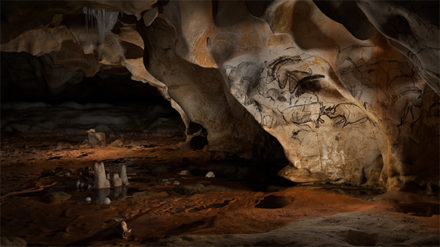Writer Paul Goldberger has always had a passion for architecture.
Well known for his tenure at The New Yorker, Goldberger is a distinguished architecture critic who now writes for Vanity Fair as a contributing editor. In a room full of architecture luminaries, he can more than hold his own.
Next week, he’ll have that chance. Goldberger will be moderating Minding the Gap: The Role of Contemporary Architecture in the Historic Environment, a one-day public symposium being presented by the Getty Conservation Institute that includes an enviable roster of internationally renowned architects and urban designers—Thomas H. Beeby, Juergen Mayer H., Rafael Moneo, Richard Rogers, and Denise Scott Brown. The panel is being presented as part of Pacific Standard Time Presents: Modern Architecture in L.A..
With that in mind, Susan Macdonald, head of GCI Field Projects and the Conserving Modern Architecture Initiative, asked Goldberger to share a few thoughts on building new structures in important historic urban areas ahead of next week’s panel.
Susan Macdonald (SM): There has been a lot of controversy over the last 10 years or more about how bold new buildings inserted into historic centers contribute to or detract from the existing historic environment. Why do you think this has become such an issue?
Paul Goldberger (PG): We’re much more sensitive in general to historic buildings than we once were, and that means we’re more sensitive to intrusions, interventions and juxtapositions in historic areas. And at the same time, there have been bigger and bolder proposals to build within historic districts. Being large in scale and bold in design doesn’t automatically mean that new architecture doesn’t fit, but it makes the process more challenging on every level.
SM: Some architects find that having to meet regulatory controls regarding how they intervene in a historic setting is restrictive. Do you think they should be given carte blanche to design how they see fit, or do you think there is a role for some form of design controls?
PG: Design controls are a mixed bag. They can prevent certain disasters, but they often squeeze out all fresh air, and make it much harder for architects to produce genuinely new solutions, however creative. In general, design controls are a form of protection, the opposite of creative inspiration.
SM: What do you think makes a successful contemporary building in a historic setting?
PG: Sympathetic scale (which doesn’t necessarily mean being the same size), texture, materials, color, proportion—all of these things can contribute to making a contemporary building work in a historic setting. The one thing that I would not list as a requirement is style. That rarely guarantees success, even though it’s the first thing most lay people, if not architects, think is necessary.
SM: What is your favorite contemporary building in an historic setting and why?
PG: Frank Gehry’s Guggenheim Museum in Bilbao and Norman Foster’s Carré d’Art in Nimes, because they both remind us how it is possible to be immensely sympathetic to a historic setting without mimicking any stylistic element of it.

The Guggenheim Museum in Bilbao, Spain, designed by Frank Gehry. Photo: Phillip Maiwald, CC-BY-SA-3.0
SM: How about a favorite example from Los Angeles?
PG: Strangely enough, even though Los Angeles is full of architecture that I like, I don’t know that it has a good example of a first-rate contemporary building within a historic setting, in part because it doesn’t have that many dense urban neighborhoods that are also historic. Richard Meier’s Museum of Broadcasting in downtown Beverly Hills comes to mind as one of the better examples, but it’s not in what one would truly call a historic setting.
Text of this post © J. Paul Getty Trust. All rights reserved.
To hear more of Goldberger’s observations in a dialogue with renowned architects and urban designers Thomas H. Beeby, Juergen Mayer H., Rafael Moneo, Richard Rogers, and Denise Scott Brown, attend the Getty Conservation Institute symposium or evening panel on May 21.





Comments on this post are now closed.